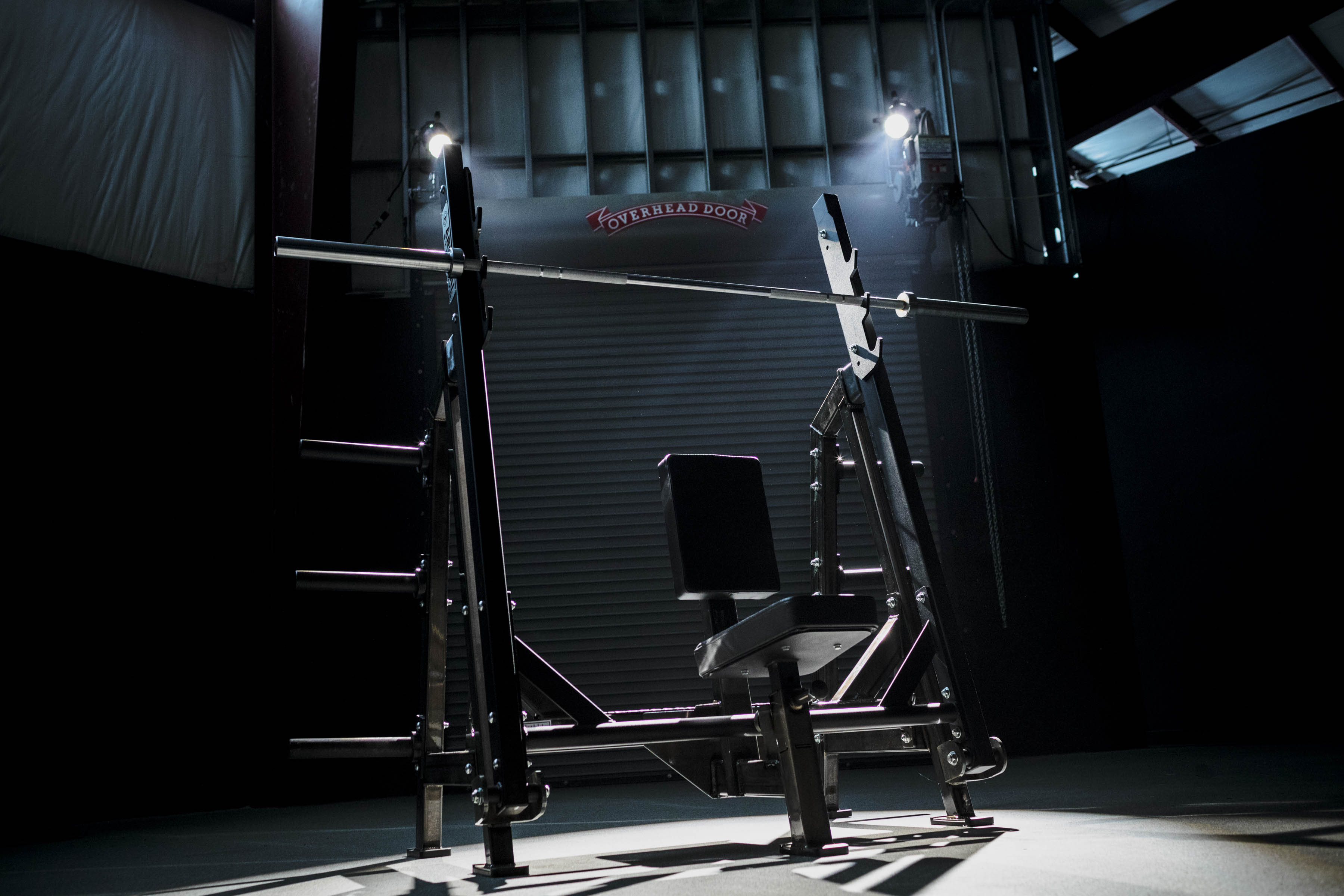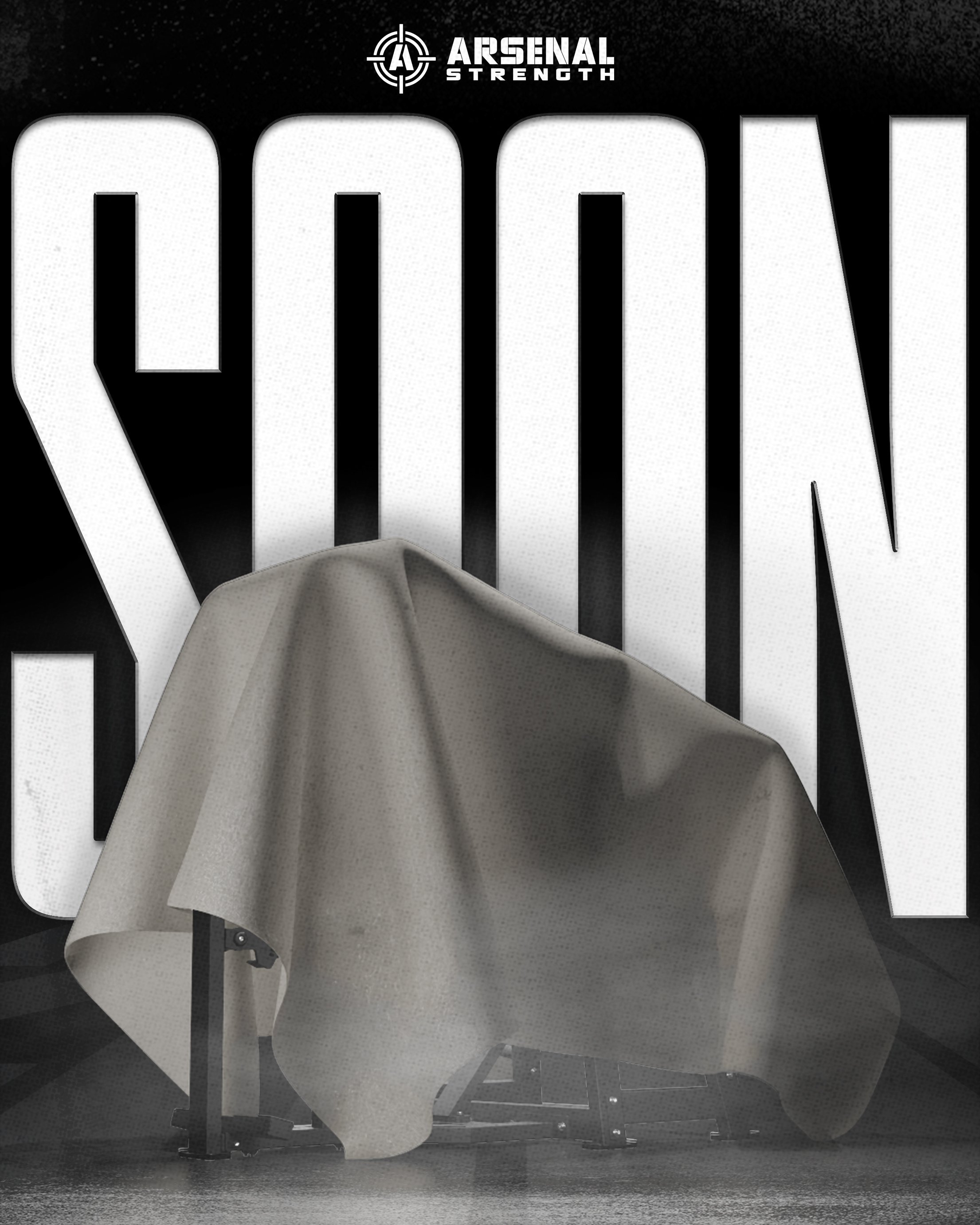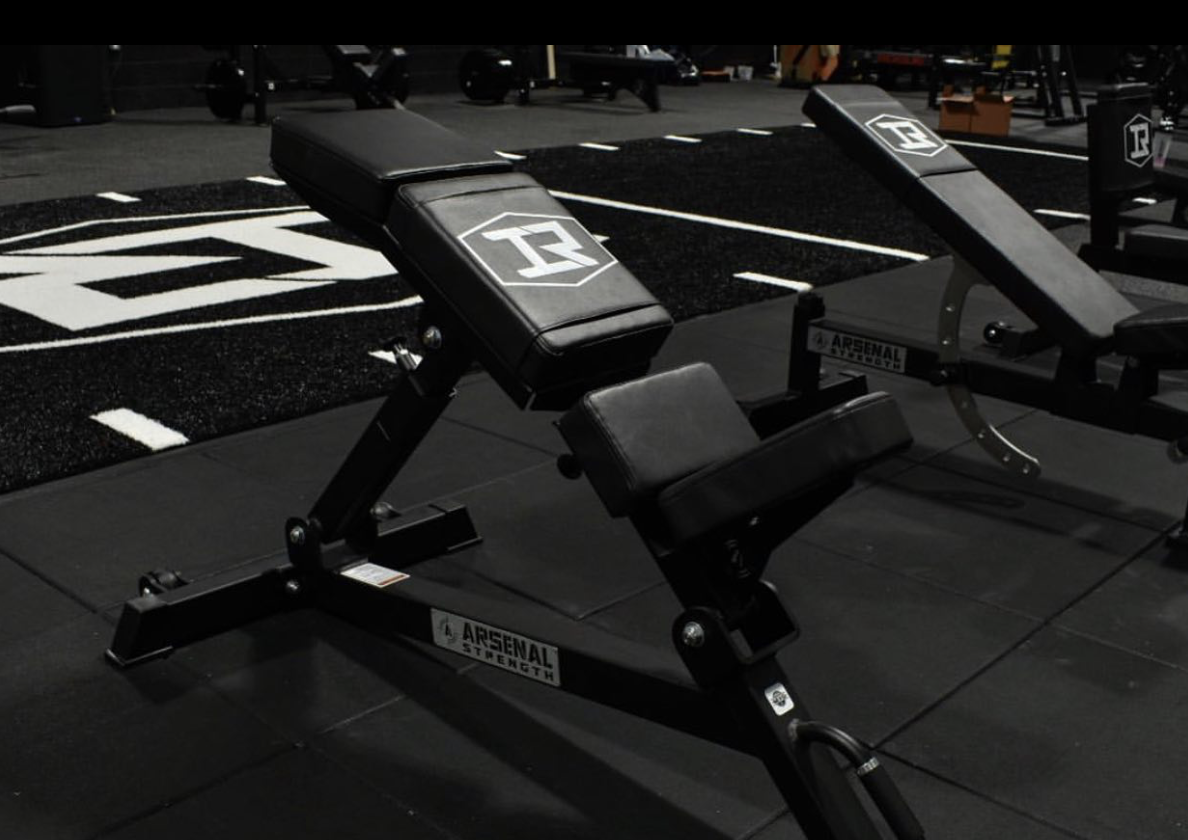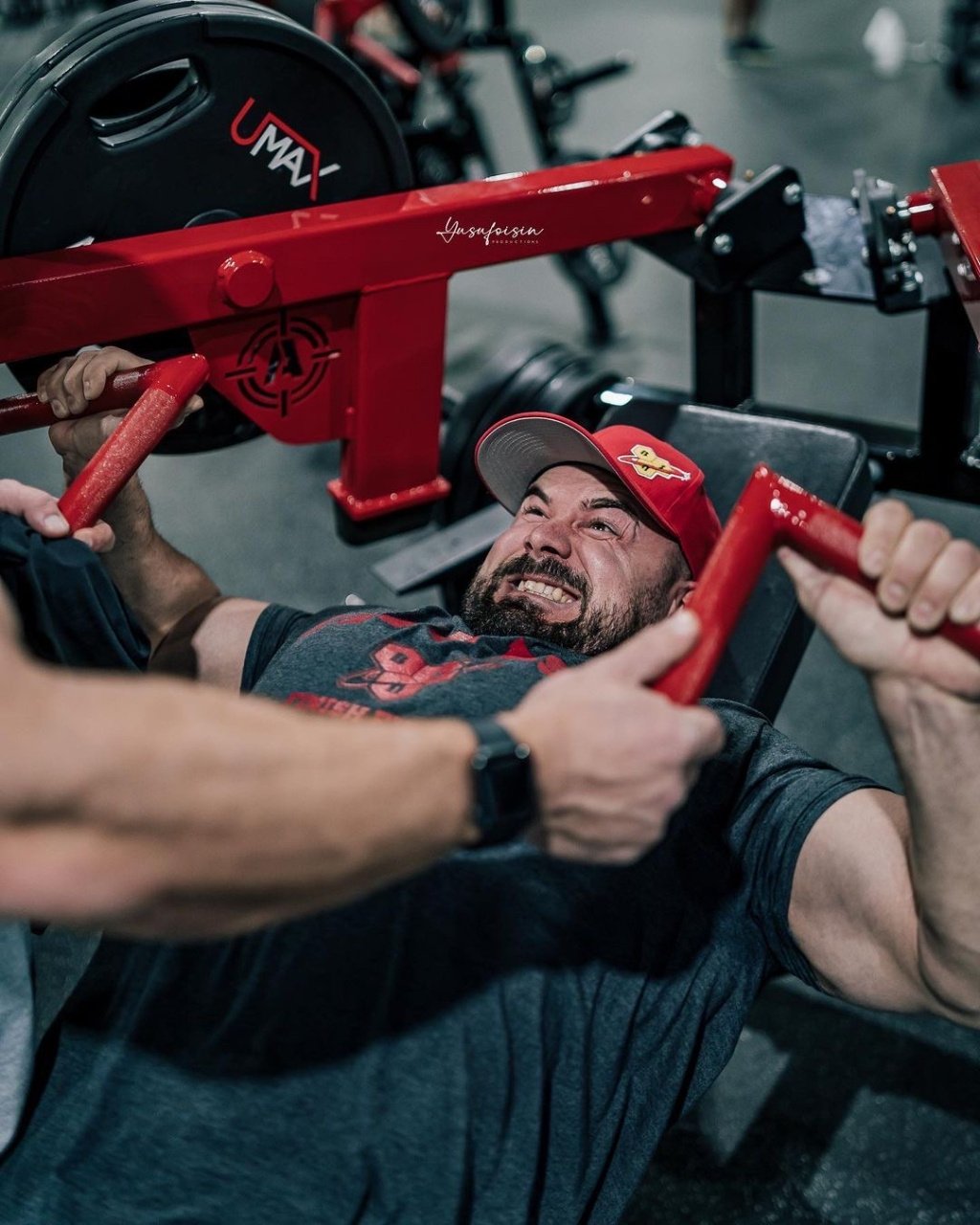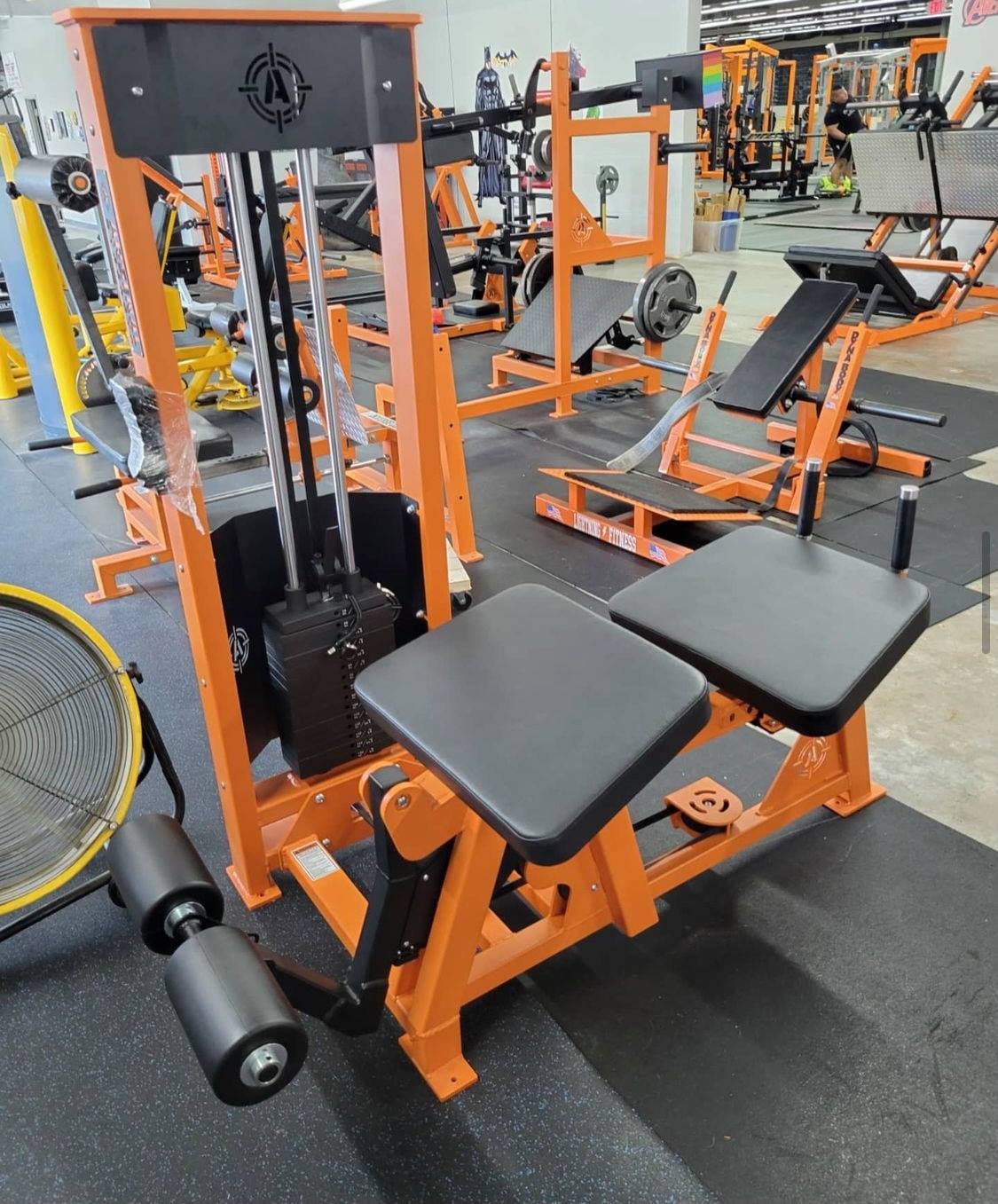Overhead Press vs Incline Bench Which Boosts Upper Body Strength More?
Wondering about the overhead press vs incline bench? Both exercises target upper body strength but do so differently. This article explores their muscle activation, joint health impact, and specific benefits. Discover which one fits your fitness goals.
- The overhead press targets the shoulders and triceps, while the incline bench press focuses on the upper chest and front deltoids.
- Both exercises play a significant role in joint health and range of motion, with the overhead press improving shoulder flexibility and stability, and the incline bench press offering benefits for shoulder joint stability and reduced shoulder stress.
- Incorporating both exercises into a strategic strength training routine can ensure comprehensive upper body muscle growth and balanced strength development, beneficial for athletic performance and long-term joint health.
Muscles Worked and Movement Patterns
The bench press and the incline bench press are both essential exercises for building upper body strength, yet they differ significantly in their execution and muscle activation. The overhead press involves a vertical or near-vertical pushing movement that predominantly strengthens the shoulder muscles and triceps. On the other hand, when performing an incline bench press at an angle of about 45 degrees, there’s increased recruitment of the upper chest as well as the front deltoids.
In terms of targeted areas and movements involved, these exercises present unique benefits: while pressing vertically during an overhead lift chiefly works on your shoulders’ lifting capacity. Angling your body on an incline engages more intensely with your upper chest area alongside shoulder development. As such, incorporating both pressing movements — overheard vs inclined — into workout regimes can lead to balanced improvements across different sectors of one’s upper physique by capitalizing on varied angles and specific muscle focuses inherent to each type of lift or ‘press’.
Overhead Press Muscle Activation
The overhead press is an essential exercise for anyone looking to enhance the strength of their shoulders and triceps. It focuses on engaging the deltoids, triceps, and upper back muscles more intensively compared to other pressing movements, thus it’s exceptionally beneficial for shoulder muscle development.
Executing this exercise also recruits the involvement of the trapezius muscles which are crucial in lifting the shoulder blade. This ensures that during the pressing action, there is efficient functioning within the shoulder joint. Engaging the posterior deltoid muscles helps stabilize the joints throughout each movement phase. Using various muscle groups not only strengthens your shoulders but also fortifies your entire upper body.

Incline Bench Press Muscle Activation
The incline bench press stands out with its unique tilt, effectively engaging the upper region of the chest as well as the front deltoids and triceps. During this exercise, the major pectoral muscles are heavily involved in both adducting and flexing the shoulder while performing this lift. For those aiming to develop their upper chest muscles, integrating an incline bench press into their regimen can be highly beneficial.
By manipulating the angle of incline between 30 and 45 degrees during a bench press, one can increase focus on strengthening shoulders. Higher angles intensify pressure on the deltoid muscles. Muscle targeting ensures that both chest and shoulder regions receive proper stimulation necessary for bolstering growth and strength in these areas.
Joint Health and Range of Motion (ROM)
Maintaining joint health and the ability to move through a full range of motion (ROM) is essential when engaging in any physical activity, including exercises like the overhead press and incline bench press. These two particular exercises serve as stabilizers for the shoulder joint and enhance its ability to handle high-velocity movements safely, which could help ward off injuries.
The execution angle and specific movement involved distinguish how each exercise affects joint health. The overhead press utilizes vertical flexion of the shoulders, requiring greater mobility in both the shoulder joints and chest than what’s needed for an incline bench press—which merges horizontal with vertical flexion. It’s evident that while both provide unique benefits, they also pose different considerations regarding maintaining healthy joints and ensuring sufficient ROM.
Shoulder Joint Considerations
The overhead press, recognized for its upwards pressing motion, requires considerable stability and power from the shoulders. This exercise works to enhance all three deltoid muscles leading to improved shoulder development and strength. Besides fortifying the deltoids and traps, it plays a role in advancing mobility in the shoulder joint and reinforcing its stability.
Contrastingly, using an incline bench press brings distinct advantages.
- It alleviates stress on the shoulders by reducing internal rotation of the humerus when juxtaposed with a flat bench press. Hence providing athletes with a safer alternative.
- The upper chest muscles receive targeted development which results in more balanced musculature across both chest and shoulders.
- Long-term stabilization of the shoulder joint is another significant benefit derived from this exercise.
Adding regular incline bench press sessions to your routine can help you achieve these gains.
ROM Differences
The overhead press necessitates an expansive range of motion, as it involves elevating the bar from collarbone height to a position where the arms are fully extended above. This movement can pose difficulties for those with limited mobility in their upper body. It is advantageous for increasing shoulder flexibility. The integration of overhead pressing exercises into one’s fitness regimen can promote improvements in this aspect of mobility.
On the other hand, when performing incline bench presses:
- there’s a diminished range of motion involved since you push the bar only up to full arm extension from your chest
- depending on how you set up your bench, angles between 15 and 75 degrees affect both how far you move and which muscles get worked
- hence individuals with less flexible shoulders may find it easier compared to straight overhead activities due to these customizable factors.
Strength Development Strategies
In order to develop upper body strength, it is crucial to have a strategic plan that includes the overhead press and incline bench press as part of your exercise regimen. Both exercises bring distinct advantages and pose different challenges which, when combined, contribute to a comprehensive strategy for enhancing balanced strength in the upper body.
When designing an effective workout program, it’s important to alternate targeted days between chest-focused and shoulder-centric training. This allows sufficient rest periods between workouts. By doing so, you not only optimize gains in muscle power but also reduce the likelihood of overtraining or sustaining injuries.
Programming for Strength
Incorporating both overhead and incline bench presses into a strength training program twice weekly, separated by chest and shoulder workouts, is part of an effective three-day split routine. By initiating these sessions with compound exercises such as the overhead press, primary muscle groups receive adequate stimulation before transitioning to isolation movements.
Adopting a rotation between the bench press and overhead press can engage a more diverse array of muscle groups for comprehensive upper body development.
Assistance Exercises
Adding auxiliary exercises is essential for achieving a balanced development of the shoulders alongside the overhead press in your workout regimen. Complementary movements like side lateral raises and cable flys can enhance primary routines, promoting uniform growth in both shoulder and chest muscles.
When performing incline bench presses, it’s beneficial to include assistance exercises such as the incline dumbbell press, which can address strength discrepancies between each side of the body since arms operate separately. These additional activities bolster overall muscular strength and contribute to reaching your fitness objectives with greater effectiveness.
Hypertrophy and Muscle Growth
The enhancement of muscle size, referred to as hypertrophy, is a primary aim for many dedicated to fitness. The incline press or incline bench press and the overhead press are influential exercises contributing significantly towards this goal. Specifically, the incline bench focuses on developing the upper pectoral muscles along with targeting the anterior shoulder muscles making it an exceptional choice for bolstering muscle development in these regions.
Conversely, engaging in overhead presses concentrates effort predominantly on strengthening deltoid and trapezius muscles thereby offering a more rounded method for cultivating upper body muscular growth. By integrating both of these pressing movements into one’s exercise regimen, an individual can achieve thorough gains in both muscular strength and mass.
Effective Exercises for Hypertrophy
Utilizing a mix of incline bench press and overhead press is highly effective for muscle hypertrophy, as it engages various muscle groups across the upper body. This strategic combination encourages comprehensive development and proportional growth of muscles by focusing on different regions.
To optimize muscle expansion, it’s advised to perform 3-6 sets consisting of 6-12 repetitions using approximately 60-80% of your one-repetition maximum. Such a regimen provides sufficient stimulation for muscular enhancement while preventing undue strain on the muscles.
Eccentric Training Techniques
Employing eccentric training methods, which involve performing the descending segment of a lift with greater control and slowness, can markedly increase muscle development. This technique can lead to optimized muscle enlargement and stabilization when applied to exercises such as the overhead press and incline bench press.
Incorporating slow eccentric movements into your incline bench workout by carefully lowering the weights in this phase augments muscular tension and promotes hypertrophy. Equally, integrating these controlled eccentric motions into shoulder press routines bolsters not only growth but also stability within shoulder muscles.
Sport-Specific Applications
The incline bench press and the overhead press are two exercises that enhance sport-specific performance significantly. The angle of the upper arm during an incline bench press mirrors what is seen in various sports, such as boxing, shot put, and football. This makes it a particularly potent exercise for athletes in these disciplines. Bench pressing activities broadly contribute to enhancing strength and stability across the entire upper body.
In contrast, training involving the overhead press is especially advantageous for sports that involve movements above the head. Sports like weightlifting demand strong and stable shoulders which benefit greatly from this type of pressing movement. Incorporating both types of presses—the overhead and the incline—into an athletic training regimen offers a holistic approach to improving sport-specific capabilities.
Transfer to Athletic Performance
The incline bench press and the overhead press both play significant roles in improving shoulder stability, particularly for sports involving movements above the head. By bolstering strength and power in the shoulders, performing an overhead press is vital for weightlifting maneuvers such as snatches and split jerks.
Adopting a closer grip while executing the incline bench press has been shown to generate increased power—an important factor for explosive upper body activities common in various sports. This modification not only boosts throwing prowess but also engages muscles including the anterior deltoid, trapezius, and pectorals more effectively.
Long-Term Athletic Development
Achieving proficiency in the overhead press and incline bench press exercises is vital for sustained athletic growth. These basic push movements are prerequisites that should be well-established before advancing to more intricate exercises. The development of shoulder stability through these pressing exercises is key to executing future technically challenging movements in training with safety.
Embedding both overhead and incline bench presses into your workout regimen can lay a strong foundation for an athlete’s performance, guaranteeing uniform strength enhancement and muscle growth as time progresses.
Practical Considerations
When undertaking the overhead press, it is important to ensure that you push the bar directly from your shoulders upwards over your head. During this movement, maintaining straight legs is vital to prevent assistance from leg drive.
In executing the incline bench press and avoiding shoulder impingement issues, using a closer grip can be beneficial as it stops excessive elbow flare. Adding a shrug of your shoulders at the peak of pressing aids in minimizing potential discomfort in your shoulders.
Body Position and Form
Proper form and body positioning are critical for both the incline bench press and the overhead press. During an overhead press, it’s crucial to keep your forearms vertical and engage your core strongly to facilitate effective pressing movements while reducing the risk of injury. By elevating your chest through an arched upper back, you create a solid surface from which to execute the lift.
When performing incline bench presses, setting the bench at an angle ranging from 30 to 45 degrees allows for precise muscle targeting without placing undue stress on the shoulders. This adjustment in angle ensures that specific groups of muscles are engaged efficiently during this exercise variant where both proper technique and safety considerations remain paramount.
Avoiding Common Mistakes
Preventing injuries and enhancing the effectiveness of your workouts can be achieved by avoiding common mistakes. In the overhead press, you should:
- Avoid excessive arching of the lower back to prevent back injuries
- Avoid using leg drive, which turns the movement into a push press
- Maintain almost straight wrists to prevent wrist pain
By following these tips, you can ensure proper form and reduce the risk of injury during your workouts.
For the incline bench press, proper technique is crucial to avoid shoulder injuries. Ensuring that the bar path is correct and not excessively arching the lower back are key to safe and effective lifting.
To summarize, incorporating the incline bench press and overhead press into your exercise regimen can markedly improve upper body muscle development, fortify strength, and boost athletic capability. Recognizing how each movement stimulates muscles differently, takes joint health into account, and cultivates strength allows for a customized training plan aligned with individual fitness aspirations. Utilizing both exercises ensures a comprehensive strategy for enhancing the power and stability of your upper body by employing an incline on the bench to target varied aspects during presses.
Frequently Asked Questions ABout Incline Press

What muscles are primarily targeted by the overhead press?
The press known as the overhead press is an excellent exercise for developing strength and stability in the upper body, focusing on engaging muscles such as the deltoids, triceps, and those of the upper back.
How does the incline bench press differ in muscle activation compared to the flat bench press?
The incline bench press targets the upper chest, front deltoids, and triceps more than the flat bench press, resulting in greater muscle activation in those areas.
Which exercise places a higher demand on shoulder stability?
Due to its vertical pressing motion, the overhead press necessitates increased shoulder stability. Performing this exercise effectively demands enhanced strength and steadiness.
What are effective programming tips for incorporating both exercises into a strength routine?
For a balanced strength routine that targets both muscle groups effectively, adopt a three-day split routine which delineates chest and shoulder exercises. This strategy enables the inclusion of both incline bench presses and overhead presses twice weekly.
Employing this method ensures that each exercise is performed adequately for progressive development in muscular strength within the chest and shoulder regions.
How can eccentric training techniques enhance muscle growth?
Slowing down the eccentric, or downward, phase of a lift during training can substantially increase muscle growth, also known as hypertrophy.
Employing this technique has been shown to not only boost muscle size but also enhance strength gains.
Additional Bent Over Row Resources:
Arsenal Strength Smith Machine
Back Training Featuring The Flex Lewis

